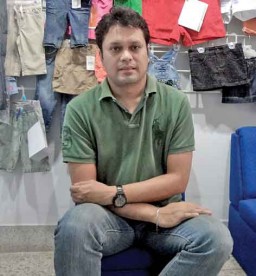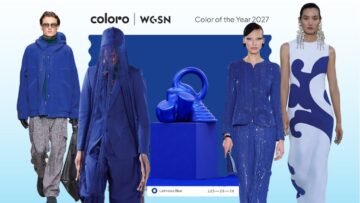
Impacted by global slowdown since 2008, garment exports have been reworking on their strategies to find markets and categories that are still growing. One category that has attracted a lot of attention in the last few years is kidswear, giving consistent growth to exporters working in the category. “We started kidswear in 2001-2002 and ever since we have noticed that in comparison to menswear and womenswear, kidswear is the least susceptible to economical turbulence in foreign markets. Be it recession or not, kids grow and so does their sizes, and therefore kidswear is always bought,” reasons Sajed Karim, Deputy Managing Director, Ananta-Ashulia, a US $ 73 million enterprise, with 60% of business in kidswear. The company is manufacturing kidswear for leading brands like H&M, GAP, Next and George. Apart from the aforementioned reasons, there are various other business factors that make kidswear a preferable manufacturing choice in Bangladesh. “Though the FOB in kids’ garments is slightly less, however the fabric utilization is even lesser in proportion to an adult garment. Also, smaller garments take less time in manufacturing and finally, there is a lot of embellishment in kids’ garments, which gives better margins,” adds Sajed.
Ananta-Ashulia has 3 production units located in the garment manufacturing belt of Ashulia, namely Ananta Garments Ltd., Ananta Jeans Wear Ltd. and Ananta Sportswear Ltd. The three companies house 2,800 machines and have a production capacity of 52,000 to 54,000 dozens per month depending on items and style. The company further has washing plants in Tongi, Mirpur and Dhampura. The embroidery unit houses 9 machines from ace brands like Tajima and Barudan.
[bleft]“The purpose of introducing Lean had been to cut down on manpower and wastage. Ananta-Ashulia was able to downsize the manpower in the line, bringing it to 42 workers for 38 machines from 62 workers working on the same number of machines previously.”
– Sajed Karim, Deputy Managing Director, Ananta-Ashulia[/bleft]
Kidswear may be Ananta-Ashulia’s cornerstone, yet the company is also doing men’s and ladies bottoms, along with some denim shirts for H&M. Unlike the traditional fancy for knits in the country, Ananta-Ashulia is mainly working in woven and does not want to lose this edge by venturing into knitted kidswear. Yet the company tries its hands on popular knit products time to time, for example they are doing jeggings this season as there is lot of demand for them. Beyond garments, the company has started a factory around 6-7 months back to manufacture leather bags for Japanese market. Also, Ananta-Ashulia is into manufacturing accessories like thread and elastics for their own in-house consumption.
It is no secret that Bangladeshi factories work at extremely low efficiencies and Ananta-Ashulia would be amongst the very few in Bangladesh who are recognizing the need for productivity improvement in their factories. The company has tied up with Charles Dagger for Lean implementation. “We started the project in Ashulia with one prototype line and today 8 lines are covered under the same. The purpose had been to cut down manpower and wastage, and we have observed an improvement of 60-70% in these lines,” informs Sajed. Because of this implementation, Ananta-Ashulia was able to downsize the manpower in the line, bringing it to 42 workers for 38 machines from 62 workers working on the same number of machines previously. The results might sound alluring, yet Lean implementation was not a piece of cake for the company. “The biggest challenge is worker migration. If your worker is absent or he migrates, then you have to re-start the process all over again,” says Sajed. What Ananta-Ashulia has done to check this problem is to lure the operators with efficiency bonuses. The company will soon start Lean implementation in its washing plant, following which it will be implemented in all the factories.
Sajed is extremely satisfied by the company’s performance for the time being and no large-scale expansion plans are on the cards. The onus is mainly on consolidating the resources and incorporating more and more automation. Yet certain investments on the spinning capacity and in the leather bag manufacturing are under consideration.






